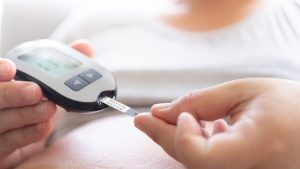From The Web / Selfies distort the face, plastic surgeons warn

Selfies or self-photographs can distort the face and make the nose look larger than it is, according to plastic surgeons who say they’ve seen an uptick in requests for cosmetic procedures from people who want to look better in selfies.
“Patients under age 40 take out their phones and tell me they don’t like how they look,” said Dr. Boris Paskhover of Rutgers New Jersey Medical School in Newark.
“They literally show me a selfie of themselves and complain about their noses,” he told Reuters Health by phone. “I have to explain that I understand they’re not happy but what they’re seeing is distorted.”
According to a poll by the American Academy of Facial Plastic and Reconstructive Surgeons, 42 percent of surgeons have seen patients who want procedures to improve their selfies and pictures on social media platforms.
Paskhover and colleagues explain in JAMA Facial Plastic Surgery that the distortion happens in selfies because the face is such a short distance from the camera lens.
In a recent study, they calculated distortion of facial features at different camera distances and angles. They found that the perceived nasal width increased as the camera moved closer to the face. At 12 inches away, for instance, selfies increased nasal size by 30 percent in males and 29 percent in females. At five feet, however, the proportion of features is to real-life scale.
“At that standard portrait distance of five feet, everything evens off,” Paskhover said. “That’s a classic portrait distance, which is fascinating. Photographers have known this for decades.”
Similar formulas can be created for other facial features as well, Paskhover said. Men who want to emphasize a stronger chin or chiseled jaw, for instance, could position the camera a certain way up close. Similarly, women who want to emphasize their eyes or deemphasize their chin or forehead, for instance, should tilt the camera to accommodate the distortion.
“Some people offer advice and tips on these types of angles, just from taking thousands of pictures,” he said. “Now there’s a model that can explain it.”
Dr. Cemal Cingi of the Eskisehir Osmangazi University in Turkey, who studies selfies and rhinoplasty trends but wasn’t involved with this new research, told Reuters Health, “I talk to patients about asymmetries before surgery and literally have them hold a mirror in their hands before we schedule a procedure.”
“If camera phones continue to improve, maybe it’ll become (possible) for people to take photos a little farther off from the face,” he told Reuters Health by phone. “That may help people who are displeased with how their nose looks bigger in the selfies they take.”
Source: Reuters

